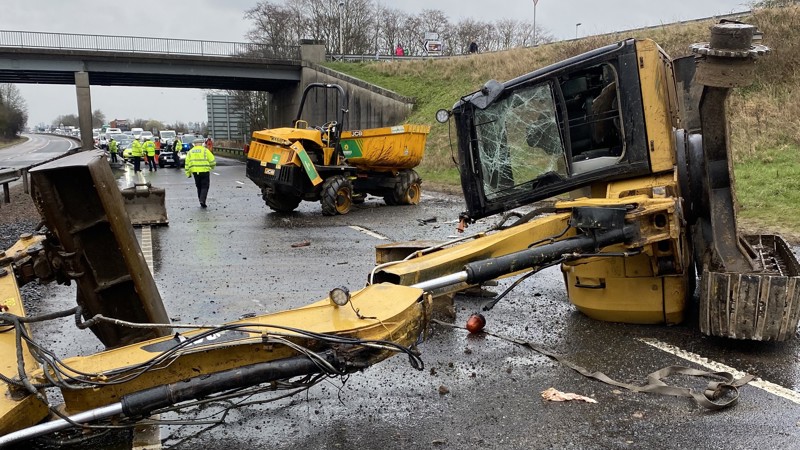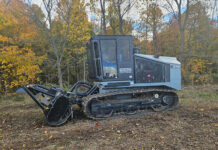THE Scottish Plant Owners Association (SPOA) has announced plans to spearhead the production of ‘much needed’ industry guidance on bridge strike avoidance in the transportation of plant and equipment.
The move follows an industry summit hosted by the organisation earlier this month which brought together key representatives from industry and transport bodies in Scotland.
Network Rail, Transport Scotland and Police Scotland joined the SPOA and member companies AB2K, Blackwood Plant Hire, GAP Group and WH Malcolm, alongside insurance company QBE Insurance Group and loss adjuster Sedgwick for a discussion on mitigating the risk of bridge strikes involving HGVs delivering plant and equipment.
The impetus for the meeting was a bridge strike incident on the A90 at Glencarse, situated between Dundee and Perth, earlier in the year. Fortunately, the incident resulted in no injuries, but it continues to restrict traffic until the necessary structural repairs are completed.
Iain Ferguson, bridge manager south west, roads directorate at Transport Scotland, explained what Transport Scotland has been doing to tackle the issue of bridge strikes: “Transport Scotland has been working alongside our partners to raise awareness of the consequence of bridges strikes and to minimise their occurrence for a number of years. Recent events such as the bridge strike at St Madoes, which involved an excavator being transported on a low loader, have confirmed that further work is needed to protect the travelling public. This is why we are grateful that the SPOA is creating specific guidance for the transporters of construction plant and we are pleased to offer our full support to this initiative.”
SPOA member company GAP Group has already implemented protocols and training initiatives aimed at preventing bridge strikes and Mark Anderson, MD at GAP Group, shared the company’s approach at this forum. Sedgwick also outlined the factors that are reviewed during a claim.
The summit revealed cause for concern in the transportation of plant and equipment by HGVs, notably:
- 43% of lorry drivers admitted to not measuring their vehicle before heading out onto the roads and 52% admitted to not taking low railway bridges into account.
- The diverse nature of loads transported by the plant sector result in many being non-notifiable and/or qualifying as abnormal.
- Network Rail records five bridge strikes per day.
- Transport Scotland confirmed that 50% of recorded bridge and structure strikes in 2023 involved plant movement on low loaders.
- The lack of a specific best practice guide tailored to preventing bridge strikes in the transportation of plant and equipment is exacerbating the risk.
The meeting concluded with a ‘resounding consensus’ among participants for the SPOA to spearhead industry collaboration in developing best practices for avoiding bridge strikes in the transportation of plant and equipment. This initiative will be led by executive committee member and former president of the SPOA, Mark Anderson.
Mark said, “The impact of a bridge strike by an HGV is absolutely devastating and, in some instances, fatal. Comprehensive guidance and proactive measures to avoid bridge strikes are long overdue. I feel strongly that the SPOA has a responsibility to its members, and indeed to the transport bodies in Scotland, to highlight this issue and take the lead in advancing this initiative.

“I would urge members and all businesses that transport plant and equipment with HGVs to continually check procedural compliance and encourage drivers to understand the importance of load heights.”
Work will now start to produce a draft guide which will then be shared and further developed by the organisations attending the summit and by other relevant stakeholders as appropriate.











